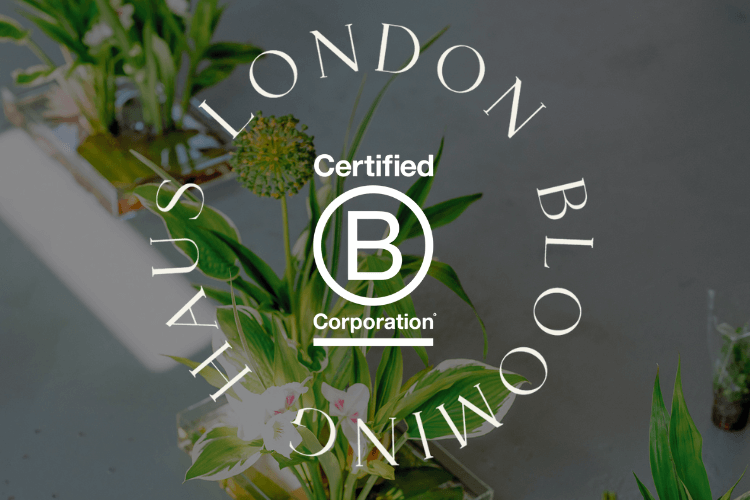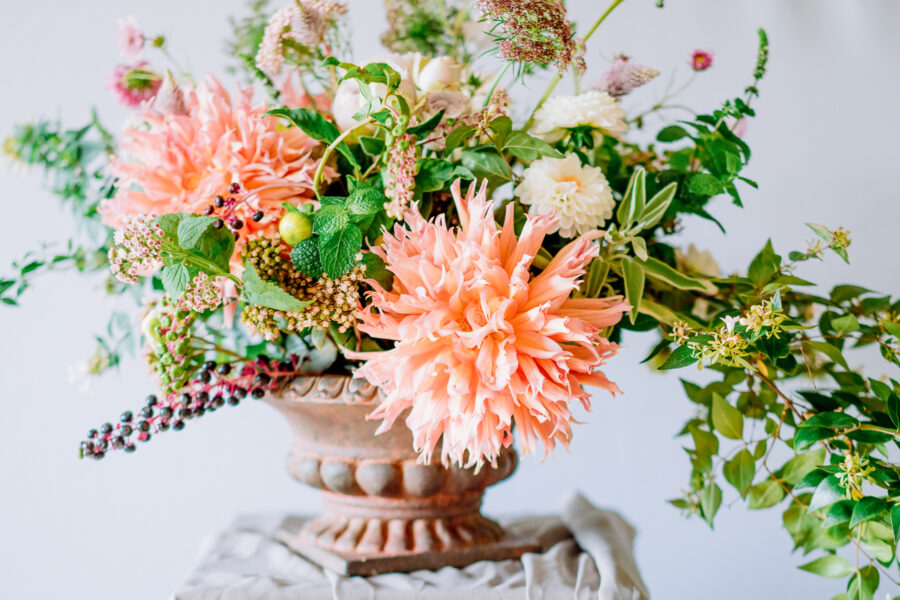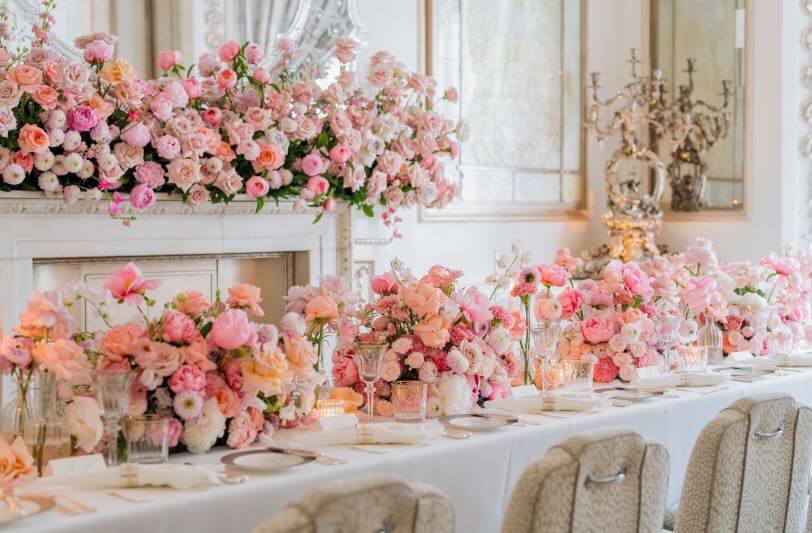Flower Symbolism: What does your wedding bouquet mean?
Planning your wedding is all about aesthetics—picking out a theme or a colour scheme, and finding the right things to match it. In the past, this included the bouquet, but more and more brides are choosing their flowers based on their significance rather than their look. There’s a word for this language of flowers: floriography.
Dating back to Victorian times, floriography let lovers express their feelings in different, more subtle ways. Different flowers hold different meanings and, in some cases, even the colour can slightly alter the intent.
This lets you inject a subtle display of affection into a wedding day filled with big gestures, giving you the opportunity to share a private message between you and your partner. But with the sheer number of romantic, wedding-appropriate flowers available, it can be difficult to make the right choice that says exactly how you feel. Our team are experts on building the perfect floral arrangements for your wedding day, creating a bouquet that says everything you want it to.
Dating back to Victorian times, floriography let lovers express their feelings in different, more subtle ways. Different flowers hold different meanings and, in some cases, even the colour can slightly alter the intent.
This lets you inject a subtle display of affection into a wedding day filled with big gestures, giving you the opportunity to share a private message between you and your partner. But with the sheer number of romantic, wedding-appropriate flowers available, it can be difficult to make the right choice that says exactly how you feel. Our team are experts on building the perfect floral arrangements for your wedding day, creating a bouquet that says everything you want it to.
Flower Symbolism of Most Popular Flowers
Roses
The most famous part of any wedding bouquet, and the bloom most closely linked to love and romance, the rose is one of the oldest known flowers. However, different coloured roses have different connotations; red roses signify true love while yellow represents friendship. Meanwhile, white roses allude to innocence and humility, while an orange or coral shade reflect deep feelings of desire. Avoid deep crimson roses in your bridal bouquet, however, as this signifies mourning.
Roses are a particularly popular choice for both bridal bouquets and buttonholes, and let you easily match and coordinate your look with your spouse’s. Just make sure you remember to remove the thorns!
Roses are a particularly popular choice for both bridal bouquets and buttonholes, and let you easily match and coordinate your look with your spouse’s. Just make sure you remember to remove the thorns!

Peonies
Another favourite with brides, peonies are sweet and sentimental, and when it comes to their flower symbolism, it is happiness and ambition. The full springtime flower has a soft appearance and is said to bring good fortune and a happy marriage, which is ideal for your big day. It may also be given to celebrate an engagement, and is the official flower of 12th wedding anniversaries, symbolising honour, fortune, and a happy relationship.
Peonies come in a range of shades, including deep red, which signifies love and passion. The pink “romantic” shades are sought out for bouquets and wedding arrangements, while white peonies symbolise beauty. All of which will add a touch of delicacy to your bouquet or outfit, making them ideal for weddings.
Peonies come in a range of shades, including deep red, which signifies love and passion. The pink “romantic” shades are sought out for bouquets and wedding arrangements, while white peonies symbolise beauty. All of which will add a touch of delicacy to your bouquet or outfit, making them ideal for weddings.

Stephanotis
Stephanotis' flower symbolism is marital bliss, and its beautiful white petals make it a particularly popular choice for bridal bouquets. The flower’s star shape lends itself well to different styles of arrangements, such as posy and shower, and can also be used to create a classic all-white display with white filler stems such as stock. Blend the stephanotis blooms with a coloured flower—like peonies—for an added twist.
Lily-of-the-valley
This dainty bloom was chosen by Kate Middleton for her bridal bouquet for its connotations of reliability and trustworthiness, while it also symbolises the return of happiness. The tiny white flowers are shaped like crowns—extremely fitting for a regal bouquet—and their trailing style is ideal for a shower bouquet.

Calla lilies
These elegant flowers have long been associated with holiness and purity, with the classic white shade becoming popular at weddings. These are especially common at Art Deco-themed ceremonies, thanks to the bloom’s distinctive cone-shape, and are often used to give a minimalist touch to bouquets, allowing the flowers to stand out against a few sprigs of foliage.
Orchids
The orchid has been seen as a symbol of luxury, beauty, and love since the Victorian era, making them a popular choice for brides. This is especially true for pink shades, which represent pure affection. Further back in time, the Ancient Greeks associated a particular flower symbolism to orchids, namely virility, with one popular myth stating that if fathers of unborn children ate large orchid tubers, the baby would be a boy. Meanwhile, if the mother ate small orchid tubers, she would give birth to a baby girl. The flower is also given to celebrate 14th wedding anniversaries.
Tulips
One of the most recognisable flowers, tulips—red ones in particular—signify perfect love. Purple tulips carry their own flower symbolism and have connotations of royalty, while variegated shades are said to represent beautiful eyes. The stately flowers are popular choices for springtime weddings and are striking enough to be held in their own bunch, rather than a large, mixed arrangement.
Bouquet fillers and greens
It’s not just the main flowers in a bouquet which have their significance. For large arrangements, the filler plants can carry their own flower symbolism and and relevance too, which you may want to discuss with your florist.

Baby’s Breath
One of the most popular filler flowers, these small white blossoms are soft and delicate and are used to convey innocence. Because of their popularity in bridal bouquets, the bright flowers are also meant to symbolise everlasting love.
Bells of Ireland
These long stems are ideal for shower-style bouquets, or for an arrangement that needs a little extra height and texture. They’re also a popular choice for centrepieces and are said to bring good luck.
Feverfew Daisies
One of the most popular wildflowers, daisies bring a sense of innocence to a bridal bouquet. The small white and yellow flowers are said to symbolise loyalty, love and purity.
Stock
A bouquet staple, stock not only fills in any bouquets but also adds a sweet scent with it. The large blooms come in an array of colours, including white, pink, red, or lilac, lending itself perfectly to any bridal arrangement. And with the affectionate symbolism, it’s easy to see why it’s so popular.




